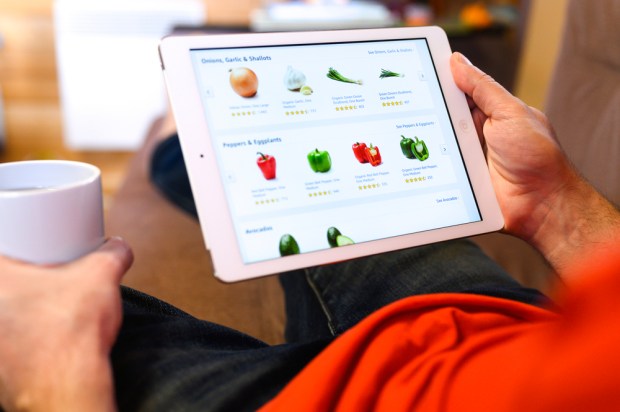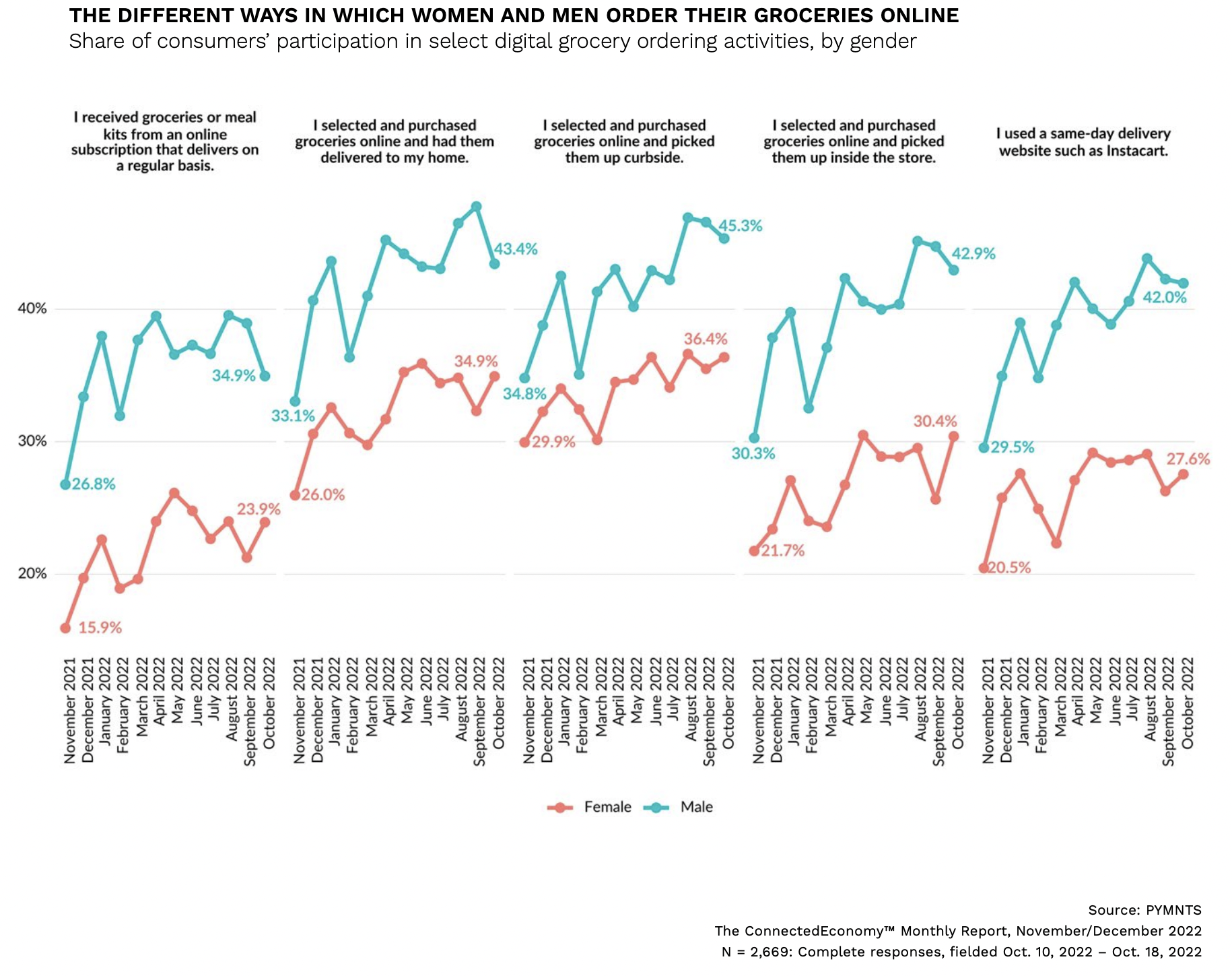More Men Than Women Order Groceries Online

In today’s digital-first economy, online shopping has become increasingly popular across various sectors. However, when it comes to online grocery shopping, there is a gender divide.
The PYMNTS Intelligence study “ConnectedEconomy™ Monthly Report: The Gender Divide Edition” drew from a survey of more than 2,600 U.S. consumers to understand the different ways that men and women use the internet in today’s increasingly digital economy.

The study found that across online grocery channels, men outpace women in adoption. In October 2022 alone, for instance, approximately 8 million more men than women ordered their groceries online for home delivery.
In percentages, 43% of men reported that they had purchased groceries online for home delivery in the month, while 35% of women did so. Similarly, 35% of men reported that they had made purchases from grocery or meal kit subscriptions, while 24% of women said the same.
The disparities continue: 45% of men purchased groceries online for curbside pickup, versus 36% of women, and 43% of the former did so for in-store pickup, compared to 30% of the latter.
Finally, 42% of men used a same-day delivery aggregator such as Instacart, while 28% of women did the same. This translates to a significant gap — 52.4 million men ordered groceries this way in October 2022. In contrast, 36.6 million women did the same, indicating a difference of 15.9 million more men using such services than women during that month.
The gender divide in online grocery shopping is a notable aspect of the digital-first economy. Men have emerged as the primary users of online grocery platforms, with a preference for same-day delivery services. As the digital landscape continues to evolve, understanding these gender differences in online grocery shopping habits becomes crucial for retailers and service providers to cater to the diverse needs and preferences of their customers.

